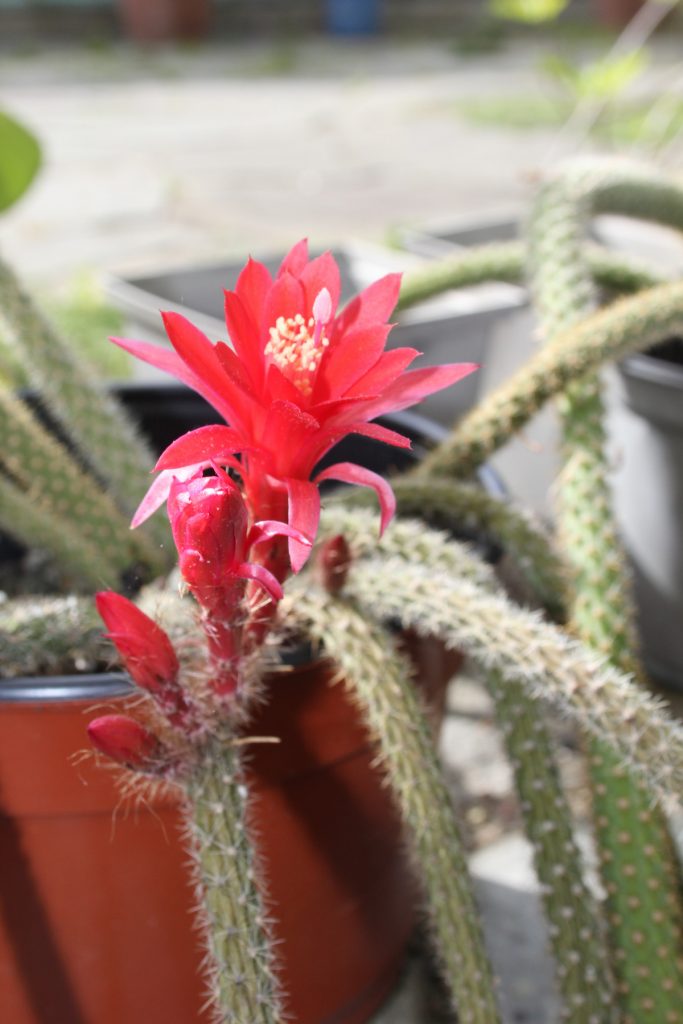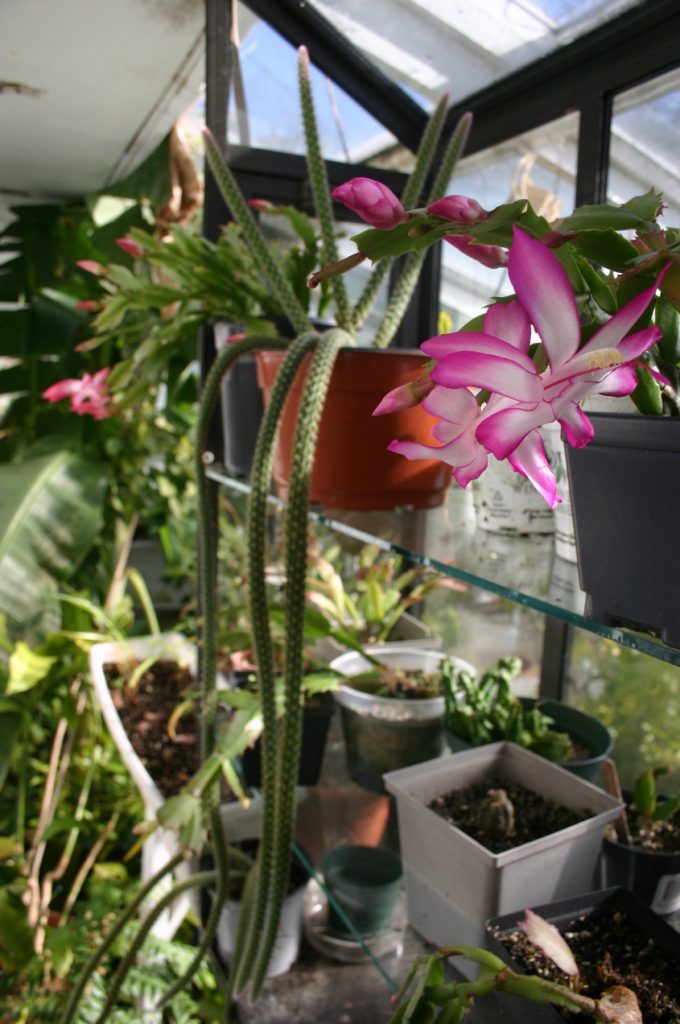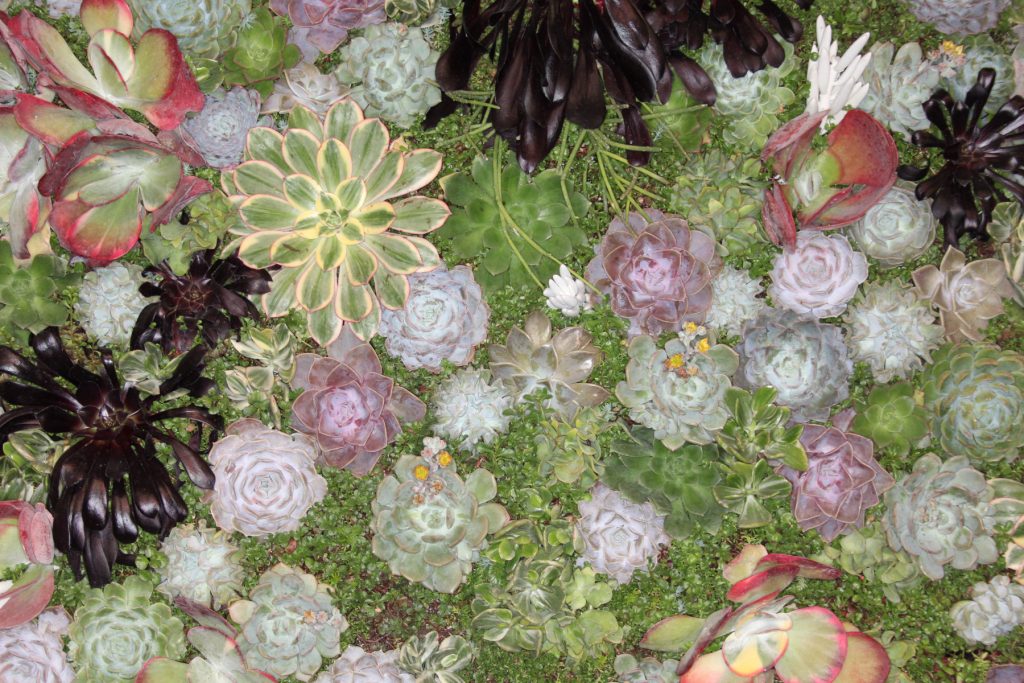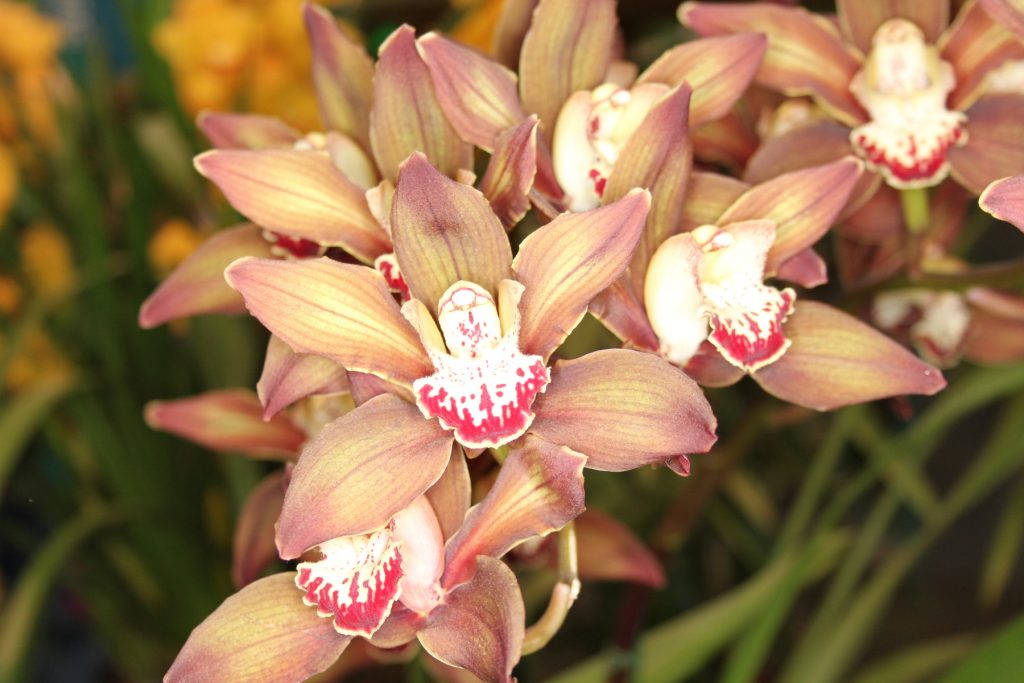
Even in a larger greenhouse, choosing the right plants can be difficult. I once decided to grow a banana plant so I could harvest my own bananas. It grew and grew and grew right out through the skylight until it was about 4’ taller than the 12’-high greenhouse. Every summer the wind off the ocean shredded the leaves. Each fall I had to bend the top back to be able to close the skylight. After four years of this, the plant decided to set fruit, and a long spathe appeared. Only the first two hands ripened sufficiently to harvest as winter set in. Given all the money spent to keep that plant in a suitably heated environment for four consecutive winters I figure the banana cost about $200. I could have bought the same-size hands at the supermarket for about $3! This example shows just how easy it is to select the wrong plants for a greenhouse.

When your greenhouse is small, say only 8’ x 6’, choosing the right plants for it can be even harder because the scale of the plants is even more important. One possible option is succulents. I have a friend who packs her greenhouse with almost 400 succulents and cacti. But these are not everybody’s cup of tea, and not all the possible choices will remain small. The saguaro cactus, for example, is a tree-like species that can grow to be 40’ tall, and even the rat tail cactus, with its lovely blooms, can get to be 4’ or 5’ long.
A good idea for a small greenhouse is to select plants that are comfortable in a pot. Dwarf vegetables are one possibility. Dwarf tomatoes, for example, can spend the entire summer in a pot and still provide an abundance of fresh fruit. You can also grow peppers, eggplants, lettuce and many other small vegetable plants in pots inside a small greenhouse.
Fruiting vines are another option for a small greenhouse but beware that they often tend to take over. I once had a passionfruit vine that grew out a greenhouse window and covered the entire top of the greenhouse with flowers. At the end of the summer the vine had to be cut back in order to close the window. I also tried kiwifruit vines (you need a male and female for fruit). They grew at a rate of about a foot a week and soon took over the available space, but the fruit was delicious. Sweet potato vines are another plant to consider. They’re most often grown for their leaf color rather than for the potatoes.

You can also grow a great many flowers in a small greenhouse. African violets, streptocarpus, begonias, and kalanchoe are all flowering greenhouse plants that don’t take up much space. Many bulbs, from amaryllis to paperwhites, can also easily be grown in pots, and they too don’t require a lot of room. If you have a small trellis, you can grow a few climbing vines such as mandevilla or morning glory. But be careful with morning glory so that the plant doesn’t get out of control.

Orchids are particularly popular flowers in a small greenhouse. The most cold-tolerant orchids are Cymbidiums, whereas Phalaenopsis orchids require that the greenhouse be heated in winter. However, because Phalaenopsis orchids like temperatures similar to what humans prefer, you can take them indoors during the coldest months. Dendrobiums are another pretty orchid that can do well in a small greenhouse, as are species of the widely grown genus Cattleya, with their often exquisitely beautiful flowers. Cattleyas like conditions similar to Phalaenopsis and are even more colorful and prolific than most other orchids. Also available are a great many crosses with other orchid species, such those of the genus Laelia. No matter which orchids you select, after the plants have flowered, they can usually be set under a greenhouse bench until they begin to flower again. Just remember to water them. To learn more about growing orchids, visit the American Orchid Society website (www.AOS.org).


